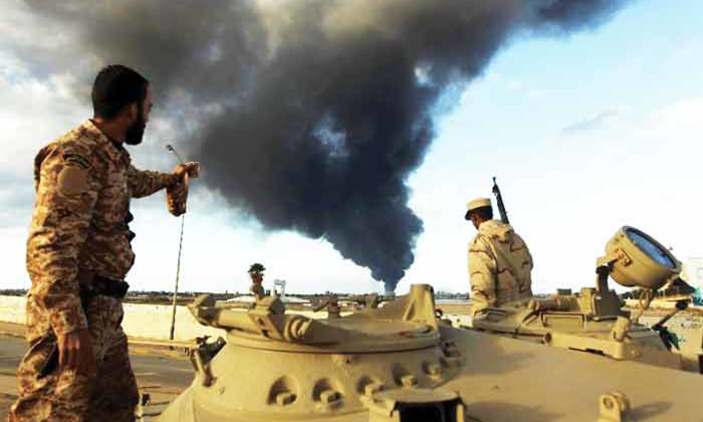Oil facilities in northern Libya were set ablaze in 2016. Libya’s oil revenues have tripled despite political instability. (Credit: AFP)
Libya’s oil revenues have more than tripled in 2017 despite violence and political instability, according to figures released on Friday by the central bank.
The backbone of the North African country’s economy, Libya’s oil sector collapsed in the wake of the 2011 NATO-backed uprising that toppled former president Muammar Gadaffi.
Oil output fell from 1.6 million barrels per day to less than 500,000 bpd between 2014 and 2016 due to violence around production facilities and export terminals as rival militias fought for control.
Despite revenues surging to $14 billion (12 billion euros) in 2017, up from $4.8 billion the previous year, Friday’s figures fall far short of the $50 billion Libyan crude sales earned before Gadaffi’s ouster.
In 2017, production surged again to over one million barrels per day, slashing a record 2016 budget deficit by half to $7.7 billion in 2017, the central bank said.
Crude sales make up 90% of Libyan state revenues, including most of what the country spends on public salaries and subsidies.
An internationally-backed unity government in Tripoli controls the country’s oil income, but a rival administration based in the east has also established its own central bank.
Since 2014, fighting and protests have regularly shut down oil facilities, a key focus of power struggles in a country with the largest oil reserves in Africa.
Analysts see restarting oil production and exports as key to kick-starting Libya’s moribund economy and returning security to the country.
Despite rising revenues, the country continues to face persistent cash shortages and is struggling to tackle an unprecedented drop in the value of its currency.













